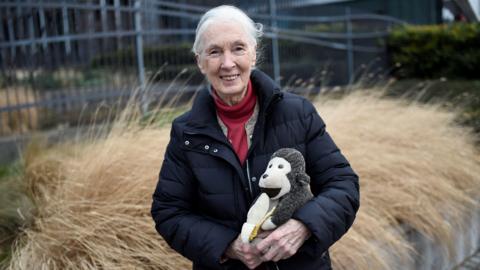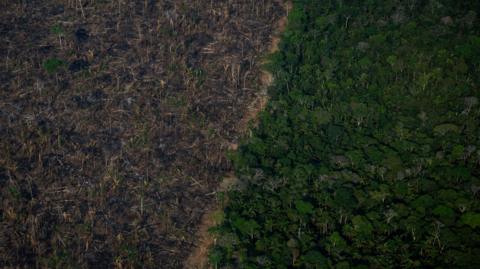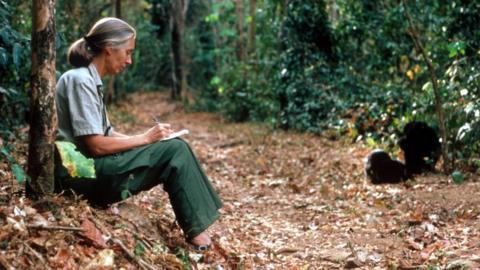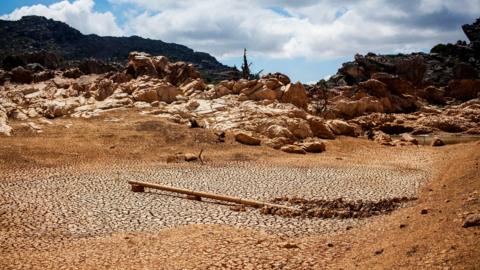Hearing her speak in this way gives me a glimpse of a toughness that belies her well-spoken, gentle demeanour. When Jane Goodall began observing and studying chimpanzees in Gombe Stream National Park in Tanzania, she was a trailblazer. Her research, now considered groundbreaking, was controversial.
She was the first person to witness and document chimpanzees making and using tools – the primates prepared sticks to fish for termites. Prior to her observations, that was a trait that was thought to be uniquely human.
She revealed that the animals form strong family bonds - and even that they engage in warfare over territory.
But her approach – associating so closely with the animals she studied, naming them and even referring to them as “my friends” was scoffed at by some (mostly male) scientists.
Her supervisor and mentor, Professor Louis Leakey, though, saw the value in her technique: “He wanted somebody whose mind wasn't messed up by the reductionist attitude of science to animals,” Dr Goodall explains.
“You don't have a dog, a cat, a rabbit, a horse and not give them a name. It's the same as when I studied squirrels in my garden as a little girl - they all had names.”
Her methods – and her sense of closeness to the primates she has dedicated her life to – have given her a unique perspective.
She tells me about a “wonderful moment” with a chimpanzee she named David Greybeard, the male chimp who she first witnessed making and using tools to catch termites. “He was the first to lose his fear of me,” she recalls.
“I sat down near him and, lying on the ground, was the ripe red fruit of an oil palm. I held it out towards him and he turned his head away. Then I put my hand closer and he turned and looked into my eyes, reached out and very gently squeezed my fingers.
“That is how chimpanzees reassure each other. We understood each other perfectly - with a gestural language that obviously predates human speech.”




